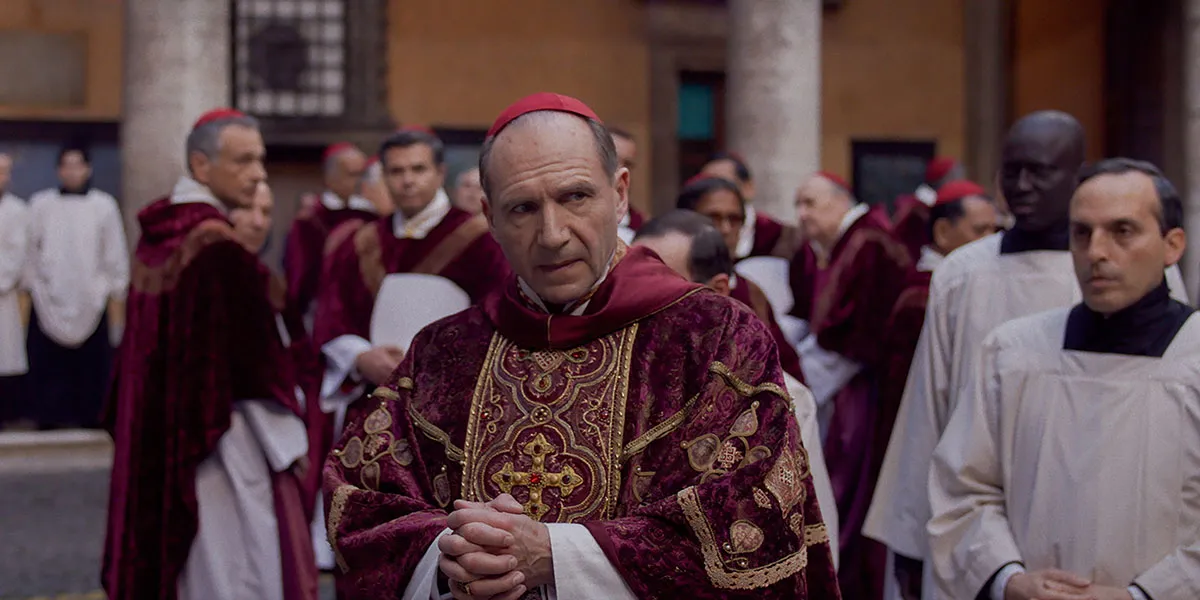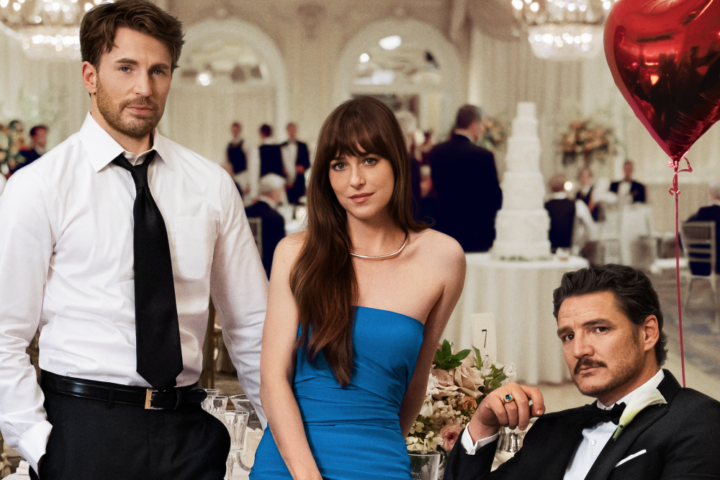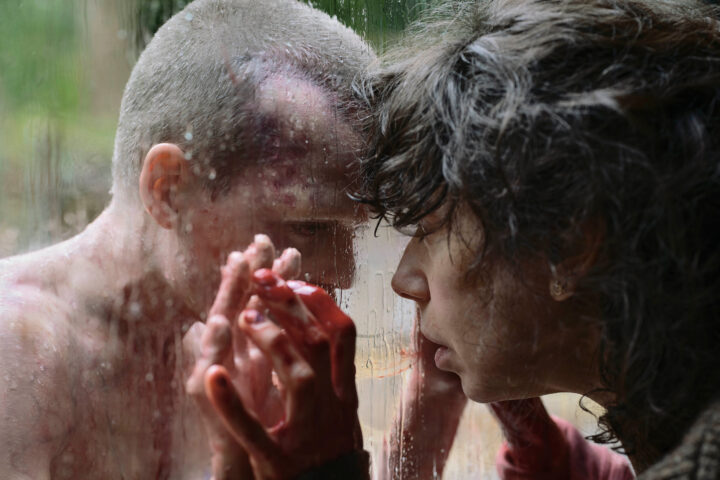Edward Berger’s Conclave takes us inside a hermetically sealed world rife with intrigue, that of a Vatican-set papal election following the abrupt death of a beloved pope. While most of us know little about such clandestine machinations beyond the conclusive puff of white smoke, Berger’s film, adapted by Peter Straughan from the 2016 novel by Robert Harris, is a backstage piece of protocol palace intrigue that manages to be a smooth piece of entertainment—one with secrets and revelations, clever twists and a provocative conclusion. Credit the talented, German-Austrian Berger, who helmed 2022’s multiple Oscar-nominee All Quiet on the Western Front, for excavating entertainment from an ancient institutional ritual of formality, presented here as one with layers of subterfuge.
Ralph Fiennes, steering Berger’s picture with impressive command, is Cardinal Lawrence, a juicy role giving him the opportunity to play the private and ever more private, while leading the confidential proceedings and confronting his own questions of faith. As the deceased’s right hand man, Fiennes masterfully wrestles with that which can only be said to himself, and that which must remain merely whispered. Equally compelling is his portrait of a man of integrity in crisis, his soul-searching Cardinal Lawrence planning a sabbatical when commanded to oversee the international parade of papal succession hopefuls descending upon Rome.
A handful of those potentials sit in Vatican City employ, including Cardinal Bellini (Stanley Tucci), a humbly progressive figure of goodwill who may be in queue for the top job; whether qualified or interested are other matters. Also vying for the seat of “the most powerful man in the world” is the self-possessed Cardinal Tremblay, played by a deliciously entitled John Lithgow, wanting the job so badly that he may just have a few dirty tricks up his scarlet cassock.

A few unexpected candidates shake up the slate, including Cardinal Adeyimi (Lucian Msamati), a Nigerian firebrand whose stature is bolstered by his candidacy then threatened by controversy, and self-aggrandizing arch conservative Cardinal Tedesco, played with gusto by Sergio Castellitto, the Spanish filmmaker and star who you may remember as one-half of a heated, tragic love story opposite Penelope Cruz in 2004’s superb Don’t Move (which he also directed). In the midst of such feverish personal ambitions—not exactly qualities becoming of a future pontiff—comes the mysterious Cardinal Benitez (Carlos Diehz), hailing from the Middle East but whose background is unclear; no one knows him and it is revealed that the deceased Holy Father only recently made him a cardinal, and in secret.
In this conclave of men we meet Isabella Rossellini’s Sister Agnes, who in a few key scenes punches through as Sister Agnes, finding voice and authority in a patriarchal cabal. And Sister Agnes is really a symbolic character supporting a line through the film, one about adaptation and the future of the Church; is its future to turn backward toward conservative tradition or push boundaries forward for an evolving population with much different needs? The film’s surprising final moments consider this conundrum in a hushed, gripping exchange of personal history, a lens that will test Cardinal Lawrence’s commitment to the scrupulous election process while pondering considerations of gender patriarchy, the church and the modern world, giving Fiennes, certain to be Oscar-nominated, a moment of striking reflection. If the film had perhaps also reflected on the church’s history and scandals while forging forward as it does, it might have achieved greater substance.
Nonetheless, Berger effectively builds tension through what is largely a procedural (don’t expect a comprehensive establishment deep dive) and Straughan elevates the story from what might have been a paperback potboiler mystery. Once the participants are in place and the rounds of voting are underway, there is a schematic quality to Straughan’s writing that is engrossing—a vote, a twist, another vote, a revelation, a third vote… Well, you get the idea. Straughan does well holding the story’s cards for the slow burn first act, but once the conclave is underway, the film is resolutely absorbing. Tech credits are expectedly top-notch, including Suzy Davies’ imposing Vatican sets (recreated at Rome’s famed Cinecitta) and Lisy Christl’s intricate costumes, well photographed by cinematographer Stephane Fontaine, capturing conspiratorial menace in the film’s elaborately labyrinthine Holy See recreation.
Recommended.
3 stars




Strong film. The speech about certainty is really wonderful.